ISSUE NO. 4: DR. CHRIS ANDERSON ON THE EXTRACTIVES SECTOR
Writers Series: Part I, Dr. Chris Anderson on the Extractives Sector
This is the first article in Mediators Beyond Borders’ six-part series answering, “What would your company/industry/field, and region, look like if adversarial decision-making systems were replaced by collaborative ones?”

What would mining look like if, instead of constant conflict with external parties – brought about by adversarial decision-making – decisions were based on collaboration? I have seen both ways of operating and the latter definitely makes for better business.
Nelson Mandela once commented: “If you want to make peace with your enemy, you have to work with your enemy. Then he becomes your partner.” This has never been truer than in the relationships of mining companies with ‘the other side’ — civil society and communities.
Twenty years ago, all around the world, mining companies and civil society organizations (CSOs) were suspicious of each other and the hostility between them ran deep. That feeling lingers in some quarters today. However, many people, on both sides, have realized that overlapping agendas, particularly around environmental protection and community development, exist. In fact, now, an entire body of practice has emerged around partnerships.
In a similar vein, miners and communities have frequently been at odds over projects— at times implacably so. Multi-million-dollar mining projects have been stymied, delayed or cancelled due to local social issues. Often, too, CSOs have aligned themselves with communities against miners; construction stalemates have ensued, production has been inhibited, and at times, violence has occurred.
I paint this picture of the two having been an almost-binary, black and white opposition; and, I have to admit, that this is still the case with some companies and some activist organizations and communities. There are, however, glimmers of optimism here and there that things can be different for mutual benefit.
My experience of almost thirty years working at the interface between companies and the world ‘outside the mine fence’, convinces me that there has been a growing convergence of approaches— especially around community engagement and development. Partnerships between entities that previously were at each other’s throats, often very publicly, now abound both at global and local levels. Examples include: Anglo American and Fauna & Flora International on global biodiversity; Anglo American with Care International on HIV/AIDS at the local level in Zimbabwe; Barrick Mining and the White Ribbon NGO on gender-based violence prevention in Papua New Guinea; Newmont and Project C.U.R.E on medical supplies and health training in Ghana, Peru, Indonesia and Suriname.
Newmont’s Ahafo Operations in Ghana provides a textbook case of this partnership trend: the company has worked with, among many others, Opportunities Industrialization Centers International; Guards of the Earth and the Vulnerable; Conservation International; International SOS; Nature Conservation Research Centre; Earthwatch; as well as joint projects with government at local and national levels (the Ministry of Social Welfare, Ministry of Agriculture, Ghana Health Service and others).
These partnering projects were not ‘greenwash’ – a PR effort to make an organization appear eco-friendly – or philanthropy. The projects addressed a problem and the partners brought funds, skills, experience and labor to bear on them. Such things were made possible not by any kind of mediation at all, but rather through a slow process of communication, relationship and trust-building, and developing bonds between key individuals in each organization. They also brought a financial benefit to the operation: in more than ten years, there has not been asingle day of production lost due to community unrest. This is in stark contrast to other mining operations which have lost millions of dollars when communities are unhappy.
Some of the widely-accepted requirements for successful partnerships between what could be seen as ‘strange bedfellows’ include: good preparation; the creation of a shared vision; open and transparent understanding and communication between partners— particularly between key individuals on both sides; being clear on risks and rewards; having an open and rational decision-making process; transparent communication, monitoring and reporting; leadership, adequate resources; and building trust as a core value.
Modern mining has also seen another trend bring previously opposed-bodies together: the growing practice of company-community agreement-making. Australia is a particularly apt case. The Agreements, Treaties and Negotiated Settlements database (ATNS) at the University of Melbourne provides details on, among other things, hundreds of agreements between extractive companies and Indigenous communities. The detailed analyses done by Professor Ciaran O’Faircheallaigh in many studies reveals the extent of this movement. Agreement-making has now become common in other parts of the mining world too: Newmont in Ghana and Rio Tinto in Mongolia. Rio Tinto has even produced a major publication, ‘Why Agreements Matter’, driven by senior corporate leadership.
These agreements are not just about money and payment benefits— though they may be motivating factors. More generally, and more importantly, agreements are about a process of coming together and building trust such that the agreement is an outcome of the relationship— not a legal document prescribing or dictating one. Formal mediation has sometimes been an important part of the processes ending up in these agreements, but building a relationship cannot be outsourced. It requires hard work, good communication and good will on both sides. It is perhaps, surprising, that the extractive sector is leading when it comes to ‘enemies’ uniting for a broader social good!
By Dr. Chris Anderson, Principal, Yirri Global LLC in Denver, Colorado, August 2017
Dr. Chris Anderson has worked as a field practitioner and senior executive in the mining industry for 17 years, with Rio Tinto, Newmont Mining, and Normandy Mining.
September 2017
News & Notes

Acorn International
1702 Taylor St, Suite 200B
Houston, TX 77007, USA
1213 Purchase St
New Bedford, MA 02740, USA
